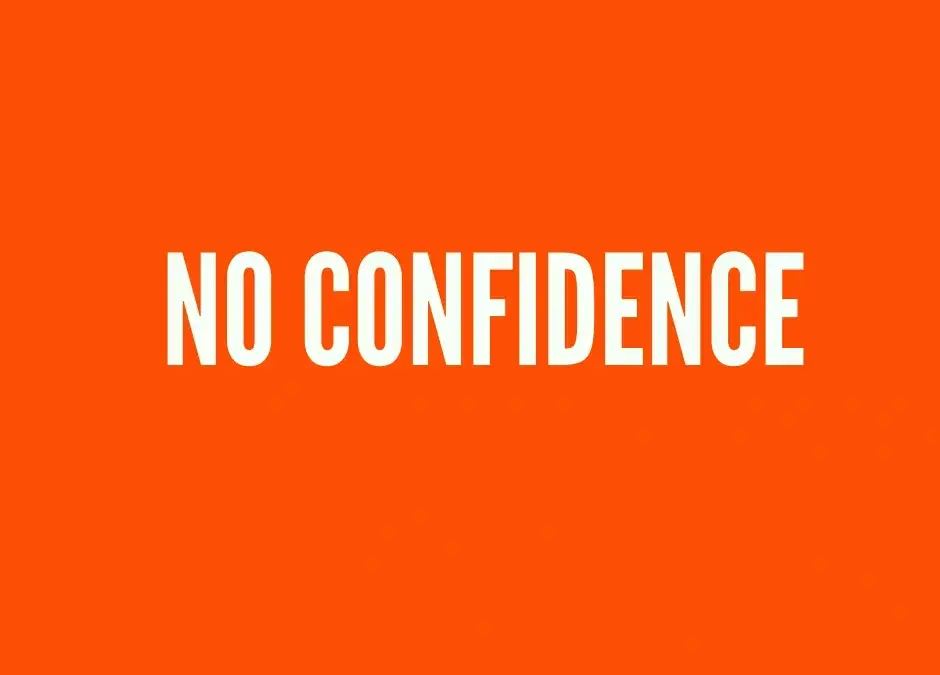
by Robyn Bolton | Jul 17, 2024 | Innovation, Leadership, Strategy
The quest for immortality is as old as humankind. From King Gilgamesh in 2100 BCE to Jeff Bezos and Larry Page, the only thing that stops our pursuit of longevity is death. So why don’t we apply this same verve and vigor to building things that last forever? Why don’t we invest in corporate longevity?
Consider this—in the last 80 years, human life expectancy increased by almost 30% while corporate life expectancy declined by almost 500%. Other research indicates that the average company’s lifespan on the S&P 500 Index dropped from 60 years in 1960 to just under 15 years in 2024.
We spend billions on products to slow, stop, and even reverse aging. Yet, according to the New York Times, there are just seven keys to living longer.
Could achieving corporate longevity possibly be just as simple?
Yes.
Here are 5 keys to corporate longevity.
1. Take care of yourself today AND invest for tomorrow
We all know what we should do to stay healthy. But one night, you don’t sleep well, and hearing your 5:00 am alarm is physically painful. What harm is there in skipping just one workout? At work, you had a bad quarter, so cutting the research project or laying off the innovation team seems necessary. After all, if you don’t save today, there won’t be a tomorrow, right?
Right. But skipping workouts becomes a habit that can bring your retirement plans crashing down. Just like cutting investments in R&D, innovation, and next-gen talent makes keeping up with, adapting, and growing in a rapidly changing world impossible.
2. Build and nurture relationships. Inside AND outside your company
According to the Harvard Study of Adult Development, strong relationships lead to happier and healthier lives and are the biggest predictor of well-being. Turns out relationships are also good for business.
Strategic alliances and partnerships directly grow revenue. For example, 95% of Microsoft’s commercial revenue comes from its partner ecosystem. Starbucks’ collaboration with Nestle allowed the coffee chain to expand its presence in people’s lives while Nestle gained access to a growing category without the cost of building its own brand. There’s a reason that Andreessen Horowitz declared partnerships a “need to have” in today’s world.
3. Everything in moderation
Toddlers are the only people more distracted by shiny objects than executives. Total Quality Management. Yes, please. Disruptive Innovation. Absolutely. Agile. Thank you, I’ll take two.
Chasing new ideas isn’t wrong. It’s how you chase them that’s dangerous. Uprooting your existing processes and forcing everyone to immediately adopt Agile is the corporate equivalent of a starvation diet. You’ll see immediate improvements, but long-term, you’ll end up worse off.
4. Eliminate bad habits (and bad people)
“The culture of any organization is shaped by the worse behavior the leader is willing to tolerate.”
Read that again. Slowly.
To live longer, stop engaging in, tolerating, and justifying bad habits. To make your company live longer, stop tolerating and justifying people and behaviors that contradict your company’s culture. Eliminating bad behavior is tough, but it’s the only way to get to your goal. In life and in business.
5. Rest
Getting 7-8 hours of sleep a night adds years to your life. Less than five hours doubles your dementia risk. More sleep also boosts your productivity and creativity at work.
The latest example of rest’s power is the four-day workweek. In 2022, 61 UK companies adopted it without any changes in pay. Two years later, 54 still have the policy, and over 30 made it permanent. Other companies, like Microsoft in Japan, reported productivity increases of more than 40%.
What will you unlock with these keys?
As a leader, you have the power to build a legacy and a company that thrives for generations. But that only happens if you channel the same energy into achieving corporate longevity that you put into pursuing a longer, healthier life.
By embracing the keys of corporate longevity—caring for today while investing in tomorrow, nurturing relationships, practicing moderation, eliminating bad habits, and prioritizing rest—you’ll build businesses that endure.
The journey to corporate immortality starts with a single step. What’s yours?

by Robyn Bolton | Jul 10, 2024 | Leadership
“Trust no one. Suspect everyone.” Great advice if you’re an MI6 agent trying to uncover a spy at the height of the Cold War. Not great advice if you’re a senior executive responsible for leading a team to deliver record results. So, when a report titled “Leadership Confidence Falls to Three-Year Low” was published, I hoped it was clickbait. So I clicked.
Things only got worse.
While two-thirds of CEOs believe that their teams role model the right culture and behaviors, work together effectively as a team, and effectively embrace change, everyone else disagrees. Only about half the C-suite believes their teams work together well, are role models, and embrace change. The lower in the organization you go, the lower those percentages get.
Why confidence is at an all-time low
In a word – change. Neither humans nor financial markets like change, and that’s all we’ve experienced for the past four years. “From the conflicts in Ukraine and the Middle East and their destabilizing effects on the world, to inflation, rising interest rates, and the launch of ChatGPT igniting massive interest in generative AI, the leadership landscape has been far from quiet. What’s more, nearly half of the world’s population is set to head to the polls for what many are calling a ‘super election year.’”
None of this is the executive team’s fault, but the relentless nature of depressing and destabilizing news wears everyone down. As a result, people have less patience and empathy and are quicker to anger, judge, and blame others. Senior execs are people, too. And they’re taking their exhaustion out on the people they spend the most time with – their teams.
What you can do about it
If you have the power to stop the wars, improve the financial markets, quell GenAI fears, and ensure that democracy reigns, please use that power now. (Also, what have you been waiting for?)
If you do not have such powers, there is still something you can do: Build trust.
Researchers found that leaders of high-performing organizations are 8x more likely to feel that their teams practice and role model high levels of trust in all their interactions across the organization. But the teams won’t practice and role model trust if you don’t set the example through:
- Inclusive, transparent, and vulnerable communication – Most of us grew up in cultures where information is power, so it is hard to build a habit of sharing information with everyone on the team, especially if it isn’t good news. But if you want your people to work together as a team, you can’t create cliques or pick and choose the information you share. There is no trust where there are Haves and Have Nots.
- Lead by listening and collaborating – In case you haven’t noticed, command and control styles of management don’t work anymore. The people on your teams are experienced adults with good ideas. Treat them like adults, value their experience, and listen to their ideas. You’ll be pleasantly surprised by what you hear and earn.
- Be consistent – If one of the causes of the problem is change and you want to be part of the solution, do the opposite – be consistent. Yes, things can change, but who you are, the values you role model, and how you treat people shouldn’t. When things change (and they will), remember that decisions made with data should only be unmade with data. Then, communicate those changes broadly, transparently, and honestly (see #1)
What will you do about it?
Rebuilding trust within your team isn’t a quick fix; it’s an ongoing process that requires commitment and consistency. By being transparent, authentic, and reliable, fostering open communication, and empowering your team, you can create a high-trust environment that drives success.
What steps are you taking to (re)build trust within your teams? Share your thoughts and let’s navigate this journey together. Remember, trust is the glue that holds your team together and propels your organization forward.

by Robyn Bolton | Jun 26, 2024 | Innovation, Leadership, Strategy
It’s not easy leading innovation. Especially these days. You need to do more with less. Take risks while guaranteeing results. Keep up with competition through incremental innovation and redefine the industry with radical and disruptive innovation. It’s maddening. Until you find the Goldilocks Zone of adjacent innovation.
Adjacent Innovation: From Middle Child to Just Right
As HBS Professor Regina E. Herzlinger and her co-authors point out in a recent HBR article, the US is in the midst of an innovation crisis. The cost of lost productivity, estimated at over $10 trillion between 2006 and 2018, is a stark reminder of the economic consequences of a lack of innovation. This figure, equivalent to $95,000 per US worker, should serve as a wake-up call to the importance of innovation in driving economic growth.
The authors identify the root cause of this loss as the ‘polarized approach companies take to innovation.’ While companies focus on incremental innovation, the safe and reliable oldest child of the innovation family, the VCs chase after radical, transformative innovations, the wild, charismatic, free-spirited youngest child. Meanwhile, adjacent innovation – new offerings and business models fo existing customers or new customers for existing offerings and business models – is, like the middle child, too often overlooked.
It’s time to rediscover it. In fact, it’s also time to embrace and pursue it as the most promising path back to growth. While incremental innovation is safe and reliable, it’s also the equivalent of cold porridge. Radical or transformative innovation is sexy, but, like hot porridge, it’s more likely to scorch than sustain you. Adjacent innovation, however, is just right – daring enough to change the game and leapfrog the competition and safe enough to merit investment and generate short-term growth.
Proof in the Porridge: 4x the returns in ½ the time
Last year, I worked with an industrial goods company. Their products aren’t sexy, and their brands are far from household names, but they make the things that make America run and keep workers (and the public) safe. The pandemic’s supply chain disruptions battered their business, and their backlog ballooned from weeks to months and even years. Yet amidst these challenges, they continued to look ahead, and what they saw was a $6M revenue cliff that had to be filled in three years and a product and innovation pipeline covered in dust and cobwebs.
From Day 1, we agreed to focus on adjacent innovation. For four weeks, we brainstormed, interviewed customers, and analyzed their existing offerings and capabilities, ultimately developing three concepts – two new products for existing customers and one existing product repositioned to serve a new customer. After eight more weeks of work, we had gathered enough data to reject one of the concepts and double down on the other two. Three months later, the teams had developed business cases to support piloting two of the concepts.
It took 6 months to go from a blank piece of paper to pilot approval.
It took just another 12 months to record nearly $25M in new revenue.
Those results are more than “just right.”
Be Goldilocks. Pursue Adjacent Innovation
Every organization can pursue adjacent innovation. In fact, most of the companies we consider amongst the world’s “Most Innovative” have that reputation because of adjacent innovation.
How will you become your organization’s Innovation Goldilocks and use adjacent innovation to create “just right” growth?

by Robyn Bolton | Jun 19, 2024 | Leadership, Strategy
As a leader in your organization, you’re under tremendous stress. Not only do you need to deliver against a “growth strategy” that demands constant increases in revenue and profit, but you also need to cut costs and support employees who are more disengaged and burned out than ever before. If it feels like you’re working harder and running faster than ever to maintain the status quo, then I have good and bad news for you.
Bad news: You’re right.
The feeling of working harder or moving faster simply to stay in the same place is called the Red Queen effect or hypothesis. The hypothesis asserts “that species must constantly adapt, evolve, and proliferate in order to survive while pitted against ever-evolving opposing species.” Its name is inspired by the Red Queen in Lewis Carroll’s Through the Looking Glass, who explains to Alice, “here, you see, it takes all the running you can do, to keep in the same place.”
You probably feel the same need to adapt to survive “while pitted against ever-evolving opposing species” every time you see new technologies, read about another new management framework, or hear news from your competitors. You also understand that your organization needs to grow and often hear that it needs to do so at all costs, so you buckle down, work hard, and pull off quarterly miracles.
Good for you! You’re reward? You get to do it all over again, and faster, this quarter. And, to add insult to injury, all that growth you’re working harder and harder to achieve is a mirage.
75% of companies do not grow.
HBS professor Gary P. Pisano examined the growth rate of 10,897 publicly held US companies between 1976 and 2019. When adjusted for inflation, the top quartile grew 11.8% yearly, but the other 75% showed little to negative growth.
Being in that top quartile was no guarantee of success, as only 15% (3% of the total sample) were able to sustain a growth rate of 0.3%+ for 30 years. In fact, only SEVEN companies—Walmart, UPS, Southwest, Publix, Johnson & Johnson, Danaher, and Berkshire Hathaway—were top-quartile growth companies throughout the thirty years studied.
If you worked at one of those 7 companies, congrats! Your hard work delivered real and repeatable growth. If you worked at any of the other 10,890, I hope they offer great benefits?
We know why.
Every good academic knows you can’t just throw out some data without trying to find a causal link, and Professor Pisano is a good academic
“I have found that while the usual explanations for slow or minimal growth—market forces and technological changes such as disruptive innovation—play a role, many companies’ growth problems are self-inflicted. Specifically, firms approach growth in a highly reactive, opportunistic manner. When market demand is booming, they go on hiring binges, throw resources at developing new capacity, and build out organizational infrastructure without thinking through the implications… In the process of chasing growth, companies can easily destroy the things that made them successful in the first place, such as their capacity for innovation, their agility, their great customer service, or their unique cultures. When demand slows, pressures to maintain historical growth rates can lead to quick-fix solutions such as costly acquisitions or drastic cuts in R&D, other capabilities, and training. The damage caused by these moves only exacerbates the growth problems.”
(Bold text added by me)
Good news: You Can Do Something About It
In fact, as a leader in your organization, you’re among the few who have any prayer of pulling your organization out of the Red Queen’s race and putting it on track to real and sustainable growth. Achieving this incredible success requires you (and your colleagues) to decide three things:
- How fast to grow (target rate of growth)
- Where to find sources of new demand (direction of growth)
- How to assemble the resources required to grow (method of growth)
Together, these three decisions comprise your growth strategy and enable your organization to achieve the “delicate balance” between demand and supply required to sustain profitable growth.
Getting to these decisions isn’t easy, but neither is slaying the Jabberwocky. So, as this brief rest stop in your race comes to an end, who do you choose to be – Alice, who works hard and deals with a bit of nonsense to progress, or the Red Queen, content to work harder to stay in the same place?

by Robyn Bolton | Jun 10, 2024 | Innovation, Leadership, Stories & Examples, Strategy
I recently listened to a podcast in which the speaker talked about his hike to Machu Picchu. He spoke about the difficulty of the hike and the moments when his confidence wavered. “But ultimately,” he said, “I was so compelled and pulled onward by the opportunity to see such a wonder, that I was able to push through.”
That was not my experience.
Many years ago, I did the same hike (in three days instead of four due to a scheduling error). And at no time did a feel “compelled and pulled onward.” In fact, about halfway through the first day’s hike, I had a complete meltdown in the middle of a beautiful grove of flowering trees. Luckily, I was so far behind the rest of my group that only my guide saw and heard the half-hour, expletive-laden beating of walking sticks against trees as I accused him of leading us to our deaths.
A few hours later, we reached our camp and the sherpas gave me tea and popcorn as they prepared dinner. I don’t know what was in the tea, but I felt much better after a cup and was grateful that a steady supply was offered throughout the next two days.
WHY you start matters
It was not the “opportunity to see such a wonder” that put me on the path. It was FOMO (fear of missing out), knowing that my friends were going on an adventure and not wanting to miss out.
Opportunity or FOMO. One of those is at the start of every journey and steels your mindset for the work ahead. If you see opportunity, you’re optimistic, resilient, and maybe even a bit idealistic. If you’re afraid, you rush through things, missing important signals and only seeing how far behind you are.
Companies do the same thing with innovation. They see a new technology, trend, or framework appear, sense an opportunity to use it to kickstart growth and leapfrog competition, and they start building. Or they see a new business model or competitor gain share and rush to mimic their approach.
WHAT you choose along the way determines how you end
It wasn’t “knowing where my journey was going, and what the journey was all about” that kept me moving forward. It was the knowledge that, unless I planned to join one of the Indigenous communities we passed through, I had to keep going.
No matter how you start, you will face a choice – continue, stay, or turn back – and that choice determines how your journey ends. If you turn back to the old ways because the new ways failed, you’re giving up. If you stay where you are, you’re stuck somewhere between the safety of what you knew and the opportunity ahead. If you keep going, you’ll stay ahead of those you never started, turned back, or stopped AND you’ll achieve the opportunity that “compelled and pulled [you] onward.”
Companies face the same decision moment with innovation. There’s a market downturn, geopolitical uncertainty, or a major global event, so executives shut down anything that’s not mission-critical while they wait out the uncertainty. A new leader takes the helm and wants to put her mark on the organization, so she rejects the old strategies and approaches and institutes her own, ignoring the counsel of others in the organization. A new competitor suddenly finds itself embroiled in controversy or bankruptcy, and executives chuckle and shake their heads because they knew all along that the only way that works is the old way.
What do you choose?
Do you start because you see the opportunity to do better or because you’re afraid of losing out?
When you face the inevitable challenge, do you turn back to “how we’ve always done things,” take up residence where you are because it’s good enough, or do you bravely persevere?
Most importantly, when you face the challenge, do you take a break, talk and listen to the people around you, and have some tea and popcorn before you make your choice?




